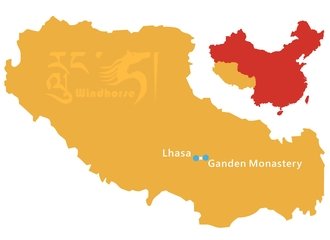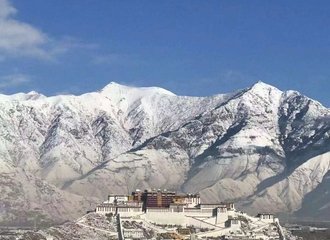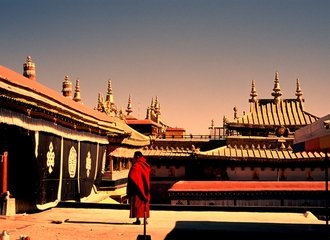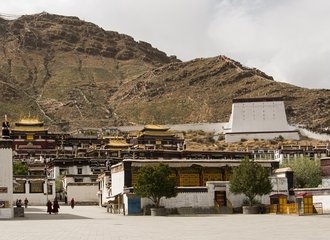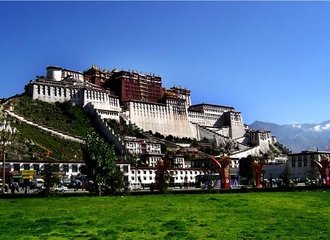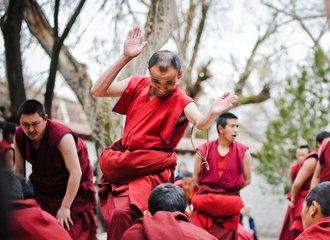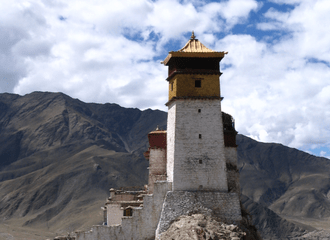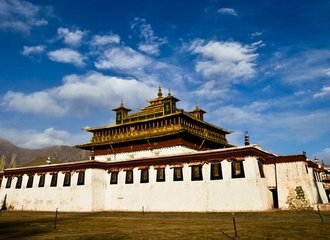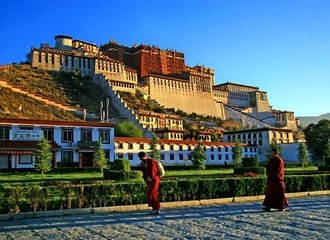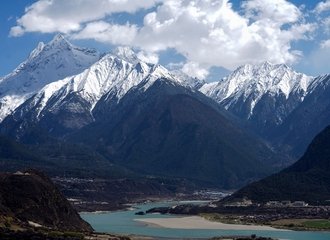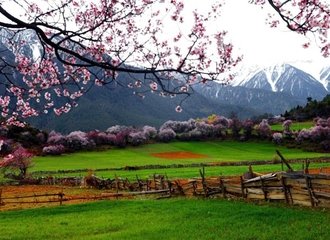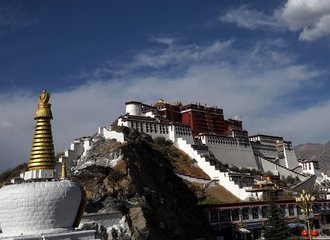11 Interesting Facts about Tibet that You Should Know

The relatively small region of Tibet has a lot that still needs to be explored. While tourism only grew in the area over the past few decades, the country's culture and history are quite costly and highly interesting. Usually, when it comes to Tibet, people associate it with China, but the Chinese Autonomous Region has much more to offer by itself. Often referred to as the 'Roof of the World,' the fact is that the Tibet region is the highest place on Earth. Mostly, not much is known about this mysterious land other than the fact that it is home to Mount Everest. Tibet has colorful heritage, landmarks, art, music, and unique cuisine.
Since Buddhism heavily influences its culture, those traveling or visiting the country will find it reflected within the architecture, musical festivals, and paintings or designs. While the region has been attracting many tourists, many things remain undiscovered about Tibet.
There is no doubt that Tibet is a secluded region, and if you want to know more about or go more in-depth, short of traveling there itself, you will not come across a lot of information regarding the area. However, there are a few very engaging and interesting facts that have been highlighted by several travelers or visitors who have been intrigued by Tibet and all that they have witnessed during their trips.
Here are 11 interesting facts about Tibet:
1. The highest railway in the world - the Qinghai–Tibet railway
There are several ways to get to Tibet, such as flying by plane, by car, or the most exciting way- by train. Traveling from Mainland China to Lhasa by train can be one of the most excellent trips. Although the journey is very long- about 42 hours from Beijing to Lhasa, you will have incredible views during the trip.
Qinghai- Tibet railway is also known as the Qingzang railway, and it is the highest railway in the world with the highest point at 5,072 meters above sea level at Tanggula Pass.
Qinghai- Tibet railway is one of the four major projects in the new century in China and is the gateway to the hinterland of Tibet. The first railway is also the plateau railway with the highest altitude and the longest route in the world.
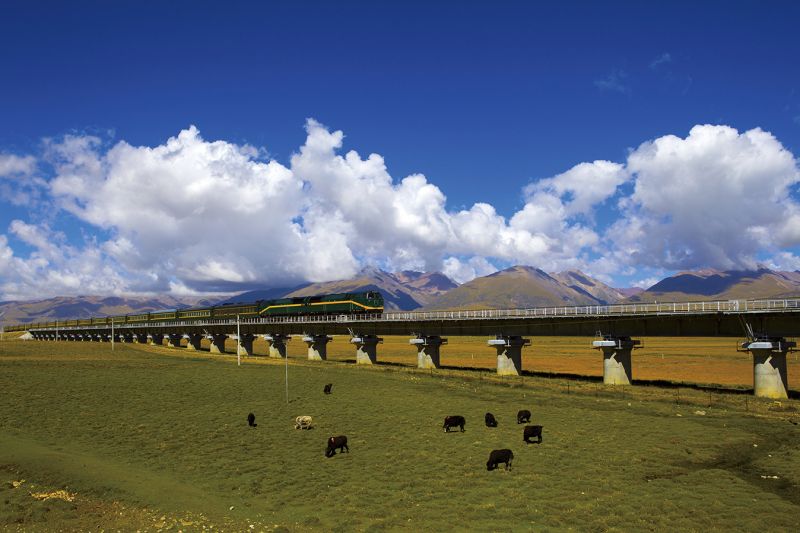
The advantage of traveling by train from Beijing to Lhasa is that you will get gradual acclimatization, which is very important in Tibet on such high altitude.
Also, you will be able to see gorgeous landscapes and untouched nature during traveling.
The Tibet train has few travel options. You can choose to travel in a hard sleeper cabin or soft sleeper cabin. There is also a hard seat, but we do not recommend that option, because you will be traveling more than 40 hours and seating on one position can be quite difficult.
2. You can't travel in Tibet by yourself.
You cannot travel in Tibet by yourself. This is a crucial fact that every traveler should know before going to Tibet. Although Tibet is a dream destination for passionate adventurers, solo traveling can pose an issue.
All foreign travelers to Tibet must participate in an organized tour, accompanied by a licensed travel guide and a vehicle with a driver. This means that every foreign tourist must book a tour with a travel agency. No one can explore Tibet alone without a travel guide.
You can either choose to travel in a private tour for yourself or your group, or take part in a group Tibet tour where you travel with other tourists in a larger group to reduce the tour fee, as Tibet is a relatively expensive travel destination.
3. You need Tibet Travel Permit to Enter and Travel in Tibet.
Another significant fact that every traveler should know is that foreign tourists cannot enter Tibet without a Tibet Travel Permit. The Tibet Travel Permit (TTB Permit) is a document issued by the Tibet Tourism Bureau, also known as the Tibet Entry Permit. Before applying for a Tibet Travel Permit, you will need to have a Chinese visa (unless you enter Tibet from Nepal). When you book a tour with a tour agency, they will apply for the Tibet Travel Permit on your behalf.
The document will display the entry/exit points to Tibet, Tibet tour dates, planned travel attractions, the number of travelers, and the tour operator.
You will need to show it at airport or train station when you enter Tibet and whenever authorities request it during your travel in Tibet.
Depending on your tour route, you may need additional documents, such as the Alien's Travel Permit and the Military Area Entry Permit. Your travel agency should assist you all required permits.
4. Tibet has developed infrastructure and is quite accessible.
Many people assume that, like its neighboring East Asian regions such as Bhutan and Nepal, Tibet will also be a quiet place with lots of agricultural lands. It is pleasantly surprising to learn that the region has experienced rapid development similar to other parts of China. Its infrastructure is impressive, with smoothly paved roads going to most towns and villages in central Tibet. There are five major highways passing through Tibet, including the Sichuan-Tibet Highway, Yunnan-Tibet Highway, Qinghai-Tibet Highway, Xinjiang-Tibet Highway, and the Friendship Highway. Overland travel along these highways offers breathtaking landscapes.
The paved road makes Mount Everest Base Camp in Tibet easily accessible, unlike the side in Nepal, which requires days of hiking. Additionally, the road to Mount Kailash has been significantly improved, making Mount Kailash more accessible than before for both regular sightseeing and pilgrimage travel.
While this development and infrastructure can be seen in most corners of Tibet, one will find electricity and solar panels installed even in the remotest of villages throughout the region. There are factories and nomad villages built for workers in various locations across Tibet.
5. Lhasa is the home of the Potala Palace
One of the most significant aspects of Tibet's rich culture and heritage is its capital Lhasa, which houses some of the most historic landmarks. The city Lhasa is not only the political, economic, and spiritual hub of the region but also holds religious importance for Tibetans due to its strong connection to Buddhism. One of the city's main attractions is the Potala Palace. The Potala Palace is an iconic symbol of Tibet and a masterpiece of Tibetan architecture. It was served as the winter residence of the Dalai Lamas from the 7th century until the 14th Dalai Lama.The Palace consists of two main parts, the White Palace and the Red Palace, is known to have a thousand rooms, various murals, art, tombs, and chapels. It has been turned into a museum since the departure of the Dalai Lama and was designated a UNESCO World Heritage Site in 1994.
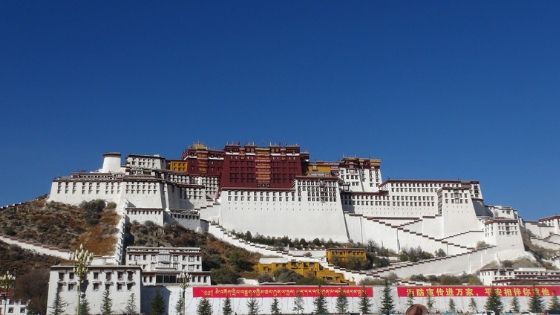
Being centuries-old and serving as the training ground for monks, Potala Palace has high symbolic value in Tibetan Buddhism. In addition to the palace, Lhasa is also home to the Jokhang Temple, considered the spiritual center of the region. The temple is renowned worldwide for its revered gold statue of a young, 12-year-old Buddha. The name "Lhasa" translates to "land of holiness" in Tibetan, and it's easy to see why. The city is filled with revered monasteries and temples that attract visitors from all over the world, who come to pay their respects and admire the breathtaking scenery.
6. High Altitude and Mountainous Terrain marks the region
A significant part of the mystery and seclusion of Tibet is that the country is very high up and surrounded by mountains. The highest ranges in the world, Himalayas, which include Mount Everest, surround the region. Tibet is the highest point on Earth, with the average elevated area being 5000 meters above sea level. As you have noticed, there are a lot of highs that are associated with this country. One cannot take away the fact that Tibet is primarily a place of altitude. Other than the highest mountain, the region also boasts the most elevated train and highest monastery, Rongbuk, which is located near the Mount Everest Base Camp, in the world. You can also one of the highest towns in the world, Wenquan, in Tibet. On the one hand, the high altitudes may be an attractive factor about Tibet; on the other, they are also why the region has 40% less oxygen than other places. The pressure is lower due to the region's location, which can make a few people dizzy and even sick until the body adapts to it. It is said that Tibetans are not affected by the altitude as their blood flow is more than double of those who live in low-altitude places or at sea level.
It cannot be denied that the country is really home to numerous natural wonders, be it mountain peaks or hidden valleys.
7. Tibet's unclimbed Mount Kailash attracts numerous tourists and pilgrims.
There is not much that is known or discovered about this mystical mountain peak. Mount Kailash is located within the Kailash Range and is really majestic in all its scenery. The peak has not only attracted the attention of mountaineers from all across the globe but also holds a high religious value for pilgrims of four religions. Followers of Hinduism, Bon, Buddhism, and Jainism, make a pilgrimage to the site of the mountain every year. This is a tradition or custom that goes back centuries, and people believe that going around the mountain on foot will bring them good luck or fortune.
Due to the various associations with religion and the mysteries that have surrounded Mount Kailash, the mountain peak has garnered a lot of interest with explorers looking to find more about it. As of yet, it is claimed that mountaineers or visitors cannot climb the summit because not only is it inaccessible, but due to the site being almost sacred, it is somewhat forbidden. However, this doesn't mean that one will be unable to explore the beauty of Mount Kailash. You will find two gorgeous lakes, Lake Rakshastal and Lake Manasarovar, located close to the peak, with the latter being the highest freshwater body in the whole world.
As yet, the mountain ranks among the top must-visit places in Tibet, but one must keep in mind that the area is slightly inhospitable. Despite everything, other than pilgrims, many tourists find their way to Mount Kailash.

The name of the mountain comes from the word Kailasa or Kelasa, which means 'crystal.' Locally, in Tibetan, this peak is called Gang Rinpoche, which, when combined, translates to a precious snow jewel. When it comes to religious importance or significance, Mount Kailash is symbolic in four of them, which have led to several people claiming it as the center of the world. While that may sound a bit far-fetched to you, there is no doubt that the mountain peak is hiding the secrets of the world within.
Whether the claims or stories are true or not, we will never know, however, the scenic landscape adds to the divine nature of the peak. In Hinduism, it is believed that Mount Kailash is the place that was home to Lord Shiva. According to mythology, the trek to the mountain was the path to righteousness and liberation or led to heaven. Due to this belief, the stairway to the peak has come to be known as the 'stairway to heaven.
The Jains hold the mountain in high value as it is said to be the point where their first leader and Jain became liberated or enlightened. In both Buddhism and Bon, Mount Kailash is believed to be central or the axis to the universe's cosmology.
Walking around the mountain is not easy, and for pilgrims, it can be more difficult. The way is 52 km long, and while some facilities are available for people, it can require a lot of effort and travel to trekking through the peak. Despite that, in the end, when you are taking in the mountain in all its unbounded beauty, you will acknowledge why people from far and wide make the journey just to catch a glimpse of the elusive Mount Kailash.
8. Tibetans are self-sufficient and almost waste-free
One of the little known facts about Tibet is that the people of the country are really ahead of time. Most Tibetans have learned ways to recycle waste and utilize it to the best of their abilities. One of the pioneers of the waste-free industry in Tibet has said that the people living there have been doing it for years since earlier on the country was not really open or accessible to the world. While previously, the items were easy to recycle as most of the products used were biodegradable. After the increase in tourism, Tibetans had to focus more on their efforts to prevent waste in the country. There are machines deployed which scoop up the plastic waste and turn it into material for tiles, floors, and walls. There are also several projects being undertaken by non-governmental organizations that involve the turning of discarded papers and clothes into usable products.
Just as they are with waste management, Tibetans have also become highly self-sufficient in recent years. They build houses that are resistant to earthquakes and require little to none outside materials. The monks in Tibet are also known to be quite tech-savvy and use the technology to spread the teachings of Buddhism globally.
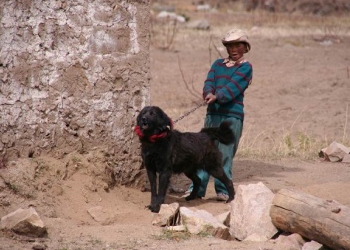
9. The country has its highly unique cuisine which consists mostly of Yak
It wouldn't be wrong to assume that Tibet would have predominantly Chinese cuisine as Chinese territory. Well, the country, much like everything else, also pleasantly surprises in this aspect. It has a unique cuisine specific to the region and is heavily influenced by the climate and high altitude of the area. Instead of commonly finding rice or fish in Tibet, one will discover that the Tibetan cuisine centers on Yak. Apart from yak meat, there is yak butter, yak yogurt, and almost any other item that can be made with it.
Essentially, Yak meat is also the best option available to the people in the country as the terrain, and challenging conditions can make it difficult to have easy access to various foods. Even though they are endangered, Yaks provide a lifeline to the Tibetans as their meat is lean and light and widely present. The milk and butter can be used in several cuisines, and sometimes, their dung is also collected by people to serve as fuel in the winters.
The cuisine in Tibet is one of its very well-kept secrets. It is unique to the culture and makes for an exciting attraction for tourists and explorers looking for an adventurous experience.
10. Buddhism is strongly depicted in everyday life in Tibet
The Buddhist beliefs are not just restricted to religious aspects or only the monasteries and temples in Tibet. They are the foundation of the country's culture and transcend spirituality as well. In the country, apart from the various landmarks and places, Buddhism is found in almost every custom, ritual, and tradition that the people follow. It is ingrained in artistic designs and paintings, music festivals, and everyday life as well. If you want to discover more about Buddhist beliefs and discover the teachings, you can find them beyond the temples and Potala Palace.
For instance, the colorful flags are an important part of Tibet's culture and are commonly seen everywhere. A rare-known fact about these flags is that they are not just put up or strung together for decoration but represent peace and harmony. It's a ritual in the country to have these flags, also known as Lung Tas, hanging in places as they symbolize peace, strength, and compassion. They also have Buddhist mantras, and meaningful messages on them, and people believe that these flags spread goodwill into the environment as well.
There are other customs and rituals regularly practiced or exercised in Tibet as part of Buddhist teachings.
11. Around 47% of the world population depends on water from Tibet
This is an actual and very surprising fact for many people, but Tibet is home to the world's third-largest water body, and six of Asia's most significant rivers originate from the country. After the Arctic and Antarctica, the third-largest storage of water and ice is within Tibet. It's why the region is often referred to as the 'third pole'. Having the biggest freshwater bodies in Asia flow from the region has added to its advantage in natural value. Other than that, it is deduced that this makes it responsible for providing the water flow to almost 47% of the world's total population.
Tibet has several lakes and rivers that have made up for significant tourist attractions as well. These are either connected or serve as the origination points for the more significant rivers. The Namtso Lake, Lake Yamdrok, and Lhasa River are such water bodies that prove to be a life force for the Tibetans and serve a great purpose to outsiders.
The country of Tibet has held the interest and attention of the people since the last decade or so, be it due to its political situation or historic and cultural significance. There is a promise of intrigue, adventure, freedom, closeness to nature, and undiscovered mysteries that make this land a highly ranked destination for every traveler.

Bonus: Facts for Travelers to Tibet
If you plan to travel to Tibet, you should know some essential things before you get on the plane. We make a list of the essential facts and information that can be helpful for travelers and information that can be interesting for every person.
Tibet is located on the southwestern border of China and is one of the five minority autonomous regions in the country. Tibet is located in the southwest of the Qinghai-Tibet Plateau, at a latitude of 26°50′ to 36°53′ north latitude, 78°25′ to 99°06′ east longitude, with an average altitude of more than 4000 meters above sea level. It covers an area of 1.2284 million square kilometers.
It is also known as the "roof of the world."
Tibet borders Xinjiang in the north, Sichuan in the east, Qinghai in the northeast, and Yunnan in the southeast; it is bordered by countries and regions such as Myanmar, India, Bhutan, Nepal, and Kashmir, and has a land border of more than 4,000 kilometers.


